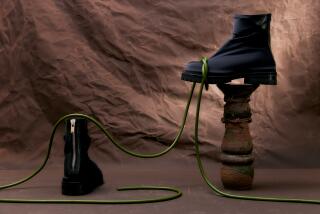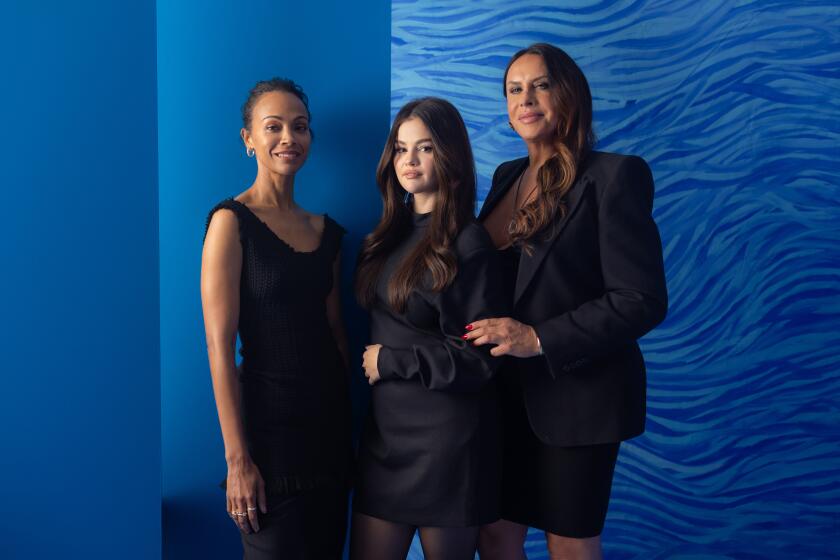Review: ‘Dior and I’ a stitch-in-time peek at haute couture creation
- Share via
They don’t call it haute couture for nothing.
As the involving new documentary “Dior and I” demonstrates, the “high” in high fashion indicates the complete and total seriousness, the almost religious fervor, with which the creators of serious fashion go about their work.
If the ungodly star-driven media frenzy that surrounds the spring collections of the great Paris houses like Christian Dior is the public face of designer fashion, “Dior and I” shows us that what goes on behind the scenes is even more intriguing.
“Dior and I” is written and directed by Frederic Tcheng, who worked as an editor and cinematographer on “Valentino: The Last Emperor.” The success of that documentary (it was short-listed for an Oscar) likely paved the way for the considerable access Tcheng had to Dior’s process.
That access came at a pivotal moment for the fashion house. The time was spring 2012, and Raf Simons, a Belgian designer who came from the minimalist menswear firm Jil Sander with little haute couture experience, had just been installed as the new artistic director at Dior.
In addition to being new, Simons had just eight weeks to pull together his first fall collection, a process that usually takes five or six months. Having that kind of inflexible deadline has become familiar for documentaries (the recent “Ballet 422” detailed a similar process in dance), and it certainly is helpful in terms of dramatic focus.
As expected, we spend time with the shy but emotional Simons and his indispensable righthand person Pieter Mulier. Simons is the rare creative director who doesn’t do his own sketching but, instead, responds strongly to visual stimulation. In one case, Simons says he not only wants a fabric based on the work of artist Sterling Ruby, but also wants it done in a labor-intensive way in which the printing is done on the individual threads, not the fabric.
“Dior and I” is at its most interesting, however, not when it is dealing with the top but when it focuses on the worker bees who make up the ateliers, the workshops where the clothes are meticulously hand sewn, a process that takes hundreds and hundreds of hours.
With their white smocks embroidered with the Dior name, the employees look as if they toil in a top-secret lab or a hospital ward. The two women in charge of the ateliers, Monique Bailly and Florence Chehet, known as premieres, are the most interesting characters in the film.
Some of the seamstresses have toiled at the house for decades, and it is a tribute to the workroom’s family feeling that each person gets to pick the dress she or he will be working on.
This kind of continuity with the past is emphasized by director Tcheng’s decision to have an actor read excerpts from a memoir written by Christian Dior over newsreel footage of the founding designer.
Since “Dior and I” was made with the house’s cooperation, the film is not exactly a slashing piece of investigative journalism, but it does give us glimpses of the reality of this kind of business. For instance, we witness a clash involving one of the premieres; Simons insists he needs her, but she is out of the country doing a personal fitting for one of the wealthy clients who spend hundreds of thousands a year on dresses.
Money also becomes an issue when Simons decides he wants to rent a Paris mansion for his show and cover all the walls with fresh flowers. The expense is so large that Bernard Arnault, the head of the company that owns Dior, has to personally approve it, causing Vogue Editor Anna Wintour to needle Simons: “I see you didn’t have any budget issues,” she says, when she sees it.
The moments when the dresses are finished and being worn by models turn out to be a bittersweet experience for the people in the ateliers, whose work is no longer needed.
“The adventure is over,” one of them says with resignation, but another woman, peeking through the curtain, murmurs, “Couture is beautiful.” A true believer to the end.
--------------
‘Dior and I’
No MPAA rating.
Running time: 1 hour, 29 minutes
Playing: Nuart, West Los Angeles
More to Read
Only good movies
Get the Indie Focus newsletter, Mark Olsen's weekly guide to the world of cinema.
You may occasionally receive promotional content from the Los Angeles Times.











